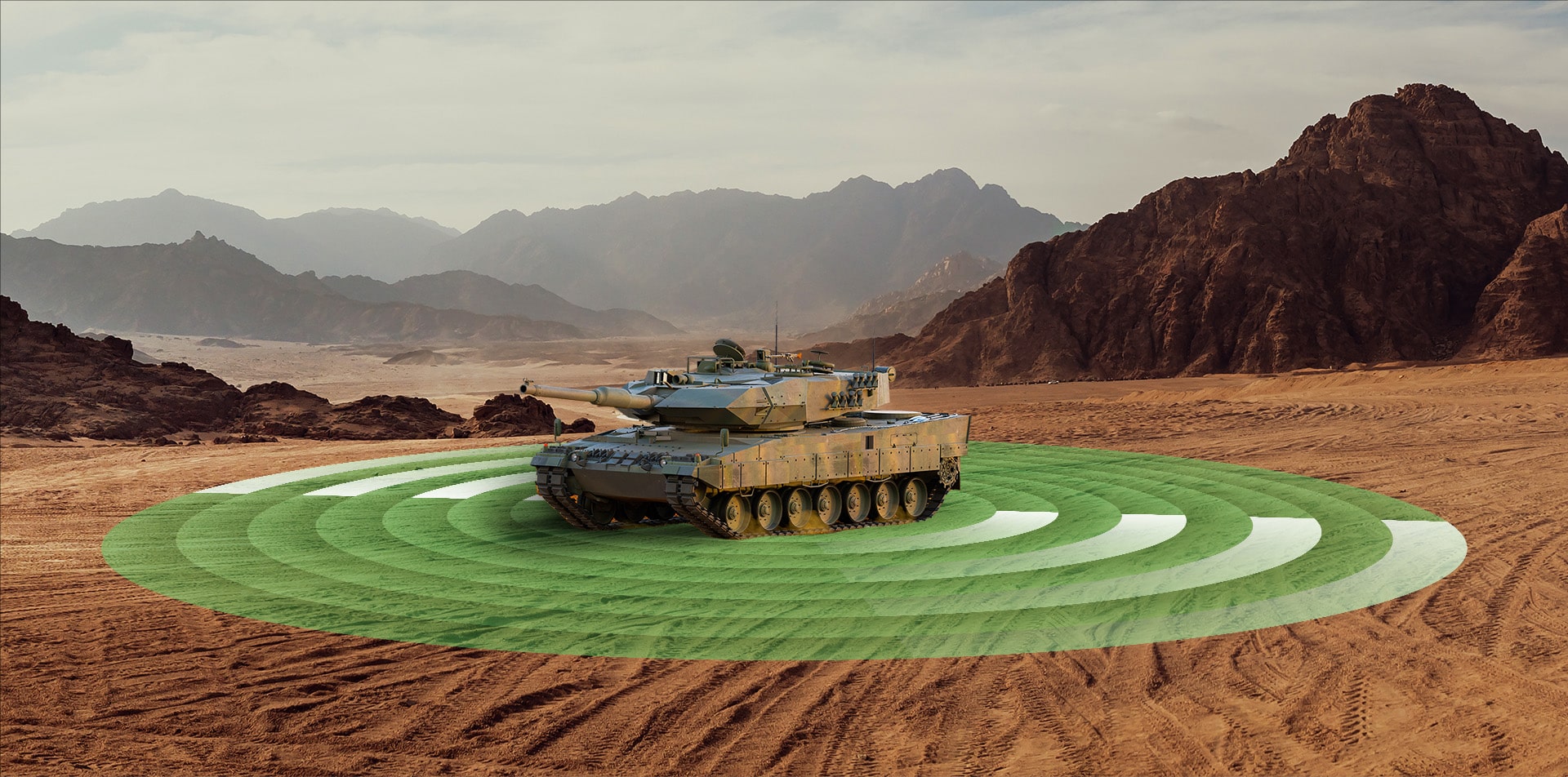Modern warfare’s asymmetrical and urban nature is changing the threat landscape in which armoured fighting vehicles (AFVs) must operate.
AFVs are constantly being retrofitted with other external systems to enhance tactical capabilities. This, along with the intrinsic shape of an armoured fighting vehicle and the positioning of the sights on a turret roof – two to three meters from the ground to one side – make visual dead zones inevitable.
The problem with keeping the hatch open
Despite the integration of additional sensors and systems, it remains common practice of AFV commanders to stand in the hatch with their heads outside to get an accurate and broader perspective of the area and effectively navigate the terrain. A related obstacle to ensuring crew safety has long been that cameras residing on an AFV’s mast were only operational when the vehicle was stationary.
As a result, crew members were exposed to hidden enemy attacks.
To address this issue, Situational Awareness (SA) technologies and urban management kits such as video cameras have been developed that provide external coverage of the AFV. These tools along with battle management systems (BMS) make it possible for armoured fighting vehicles to comprehend the significance of external factors by “illuminating” blind spots.
Such systems provide the AFV commander with a concise situational awareness picture to execute informed decisions and safeguard the crew’s lives on the battlefield. Indeed, technological innovations now make it possible for cameras to process visual data as the AFV is on the move, enhancing operational mobility and defensive capability. Since inadequate situational sensibility is a significant factor in accidents attributed to human error, the ability of these systems to deliver real time, actionable visual information is proving to be crucial to the success and safety of AFV operators.
How multi-sensor mobile platforms work
An AFV situational awareness capability heavily augmented by infrared sensors and radars provides 360° vision to crew operators without the need to pop open the hatch. The enhanced SA is based on a multi-channel surveillance system that combines short- to medium-range radar with day/thermal cameras and advanced AI-based data analytics.
The data provided by the sensor fusion image processing technology is integrated to offer automatic target detection, recognition, and tracking.
Multi-sensor surveillance systems are mounted on the corners of an armoured vehicle. From there, data from high-resolution cameras, radar, and HD Day Low Light cameras are transmitted to either a unified command-and-control located on an AFV’s dashboard or to a portable C2 tablet.
The integrated system can display the entire security landscape in one central portal, allowing the crew to see a real-time, simultaneous, minimum-latency image of the vehicle’s surroundings – enabling AFV personnel to observe better, orient, and respond to threats.
Ruggedised and highly sustainable, these systems operate in the harshest environmental conditions.
And because they provide operators inside an armoured fighting vehicle with as much valuable information as if they had popped their head out of the hatch, these systems are helping protect the lives of crew members.
Forecast for armoured vehicles in 2023…and beyond
The armoured vehicles market projects growth from USD 29.3 billion in 2022 to USD 34.1 billion, at a CAGR of 3.1%, by 2027.
Meanwhile, we are more frequently seeing armoured vehicles repurposed for civilian applications, such as the oil and gas sectors, airports, firefighting, and agriculture.
The rise in demand is in no small part attributable to sensor technology enabling armoured vehicle tactics to be designed, developed, and implemented to address security challenges and hazards presented by a rapidly evolving threat landscape.
